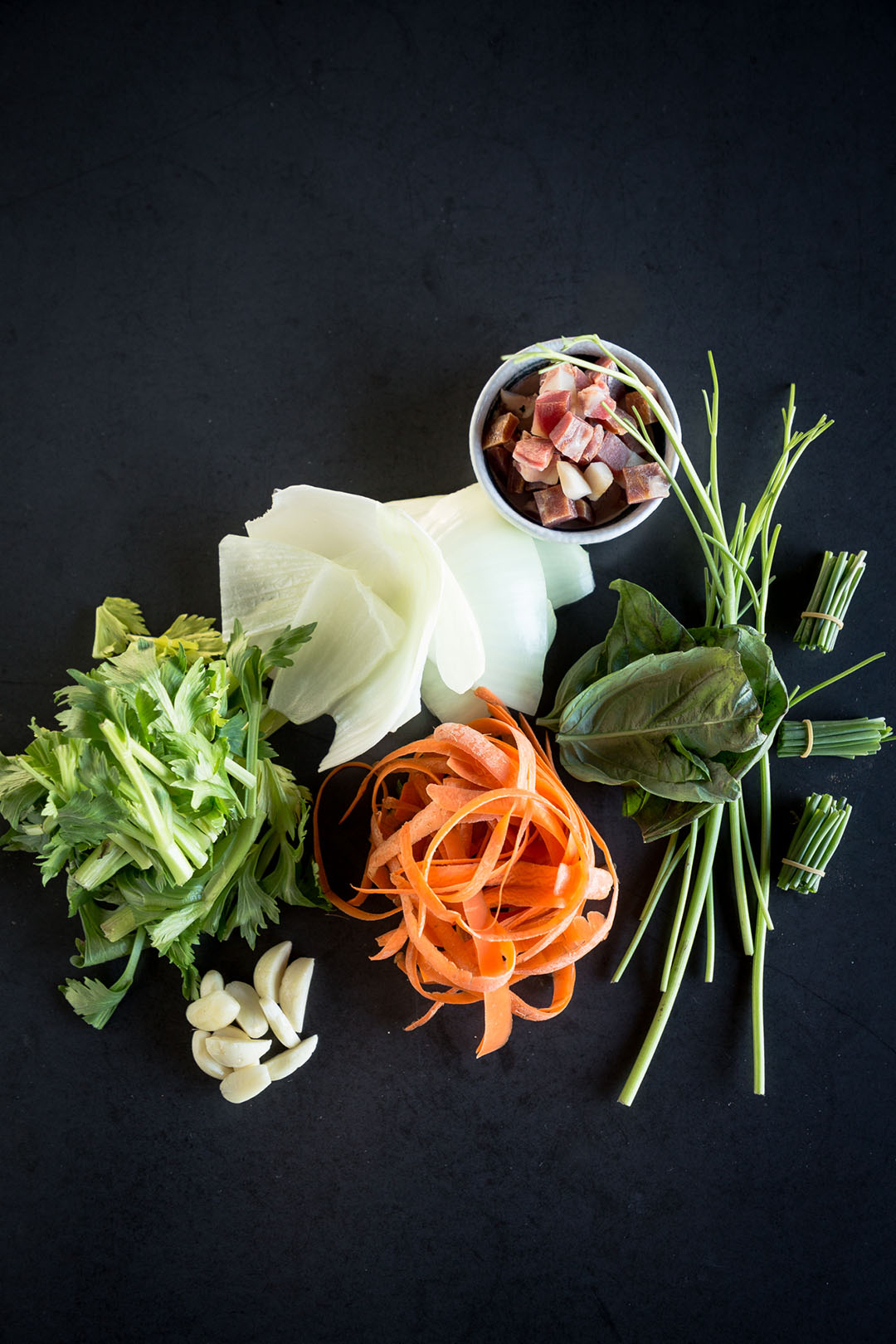How to run an eco-friendly restaurant.
The food we eat accounts for 25 percent of worldwide greenhouse gas emissions, says The Sustainable Restaurant Association’s Food Made Good program. Through cultivation and farming, transportation, preparation, operations, and waste, what people choose to put in their mouths not only affects their waistlines, but also the world around them.
As Reno-Tahoe continues to boom, welcoming new neighbors, business owners, and visitors, the dining industry also is seeing corresponding growth, with many embracing environmental responsibility in an effort to go green. In our nation and around the world, people are focusing more than ever on reducing waste and helping mitigate climate change, and restaurateurs are increasingly becoming leaders in an effort that will affect generations to come. Whether it’s using local and seasonal ingredients, recycling and opting out of single-use storage, composting, or supporting eco-friendly farming operations, opportunities abound to make a difference.
Foods That Flourish
A modern Italian restaurant serving dishes that give a nod to California cuisine, Great Gold relocated from San Francisco to Truckee in 2020. Working with area food producers, chef/owner Brandon Kirksey has upheld his commitment to using local ingredients whenever possible.
“We source a lot of things from Nevada City and the farms just outside of Reno,” he explains. “About 85 percent of our produce is allocated from small farms. Great Gold pays homage to California being The Golden State. Our goal is to provide people in Truckee with a restaurant offering food cooked with skill and sourced with a lot of intention.”
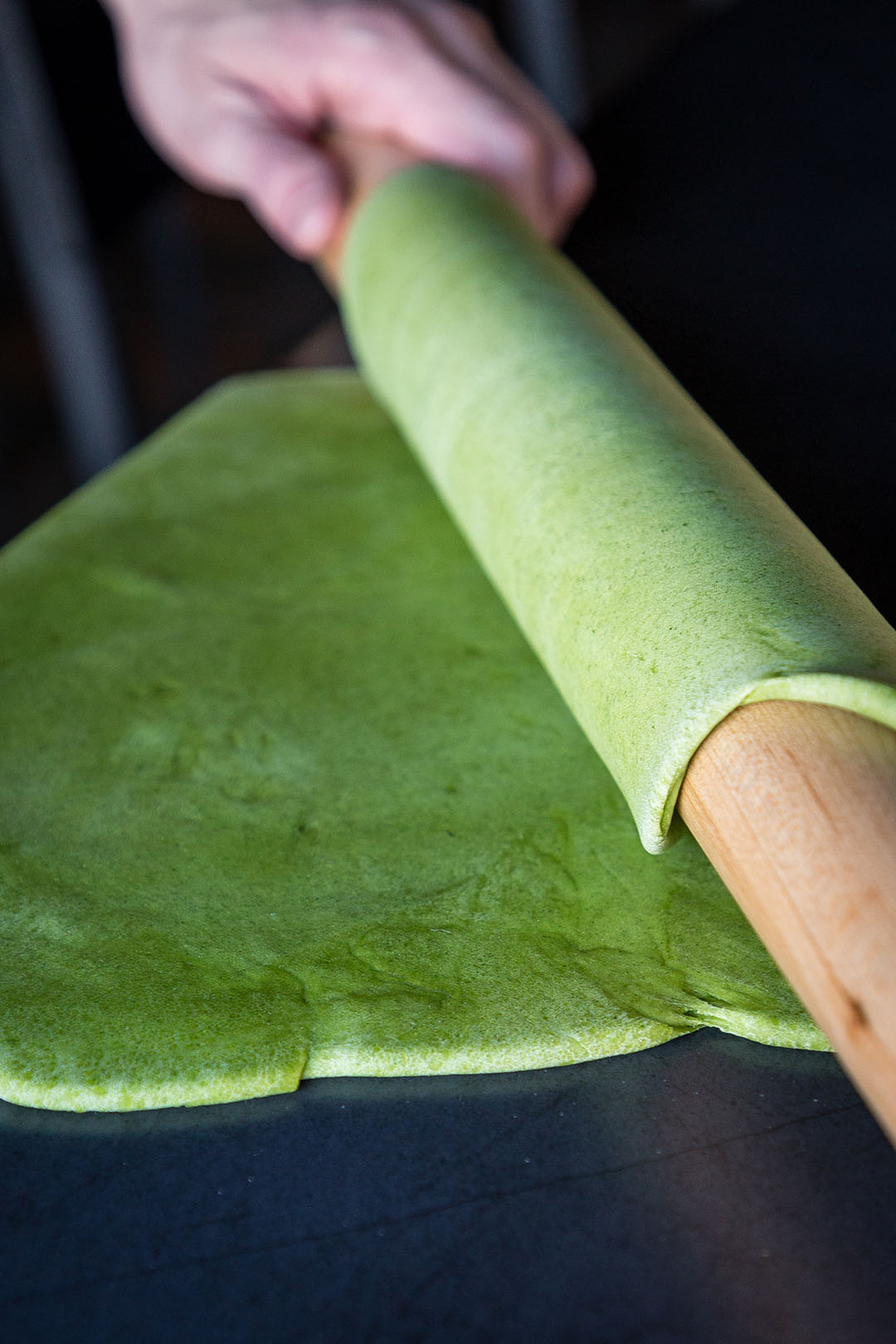
Purchasing produce, meat, and other supplies from Sierra-based businesses not only supports the economy, but it also greatly reduces a restaurant’s carbon footprint by minimizing fuel consumption and providing fresher foodstuffs for the kitchen. One way to do this is through Tahoe Food Hub in Truckee, which offers restaurants and home cooks fresh, seasonal, sustainably grown produce and pasture-raised proteins from more than 50 area farms and ranches. Delivered straight to restaurant owners, the hub’s produce is harvested to order to ensure it is at peak freshness.
“Nothing is better than using locally grown,” says Susie Sutphin, founder and director of Tahoe Food Hub. “We serve restaurants that span the spectrum from a quick sit-down to fine dining. Maybe it’s just a salad or side dish that is made with local. It doesn’t have to be A to Z on the full menu. It’s sprinkled around.”
Sutphin encourages restaurateurs to start small and focus on one or two items for the menu. She also says owners and managers should talk to their staffs daily about promoting the items and making them part of the conversations with customers.
“If [restaurateurs] are going to do this, they have to be strategic and make it part of a local culture,” Sutphin says. “[Customers] also have to be willing to pay a little bit more … Tell the story and say where it’s coming from, and people are not going to flinch at a few extra dollars to support the cause.”
When it comes to touting a menu that includes local provisions, Sutphin says at least 50 percent of the items used should be local to promote the entire list of offerings as such. If that’s not the case, she encourages folks to identify the specific menu items that are locally sourced.
Recycled and Repurposed
In 1999, when Mimi and Greg Butler opened Buenos Grill in West Reno, they operated with a recycling mindset from day one.
“We’ve always recycled everything we can, including glass, bottles, plastic, aluminum, tin, and cardboard,” Mimi says. “We even take used plastic bags to Raley’s [Supermarkets]. So much is wrapped in plastic now, even our rice comes in a big box that is lined with plastic. We can use the rice, recycle the plastic bag, and recycle the cardboard.”
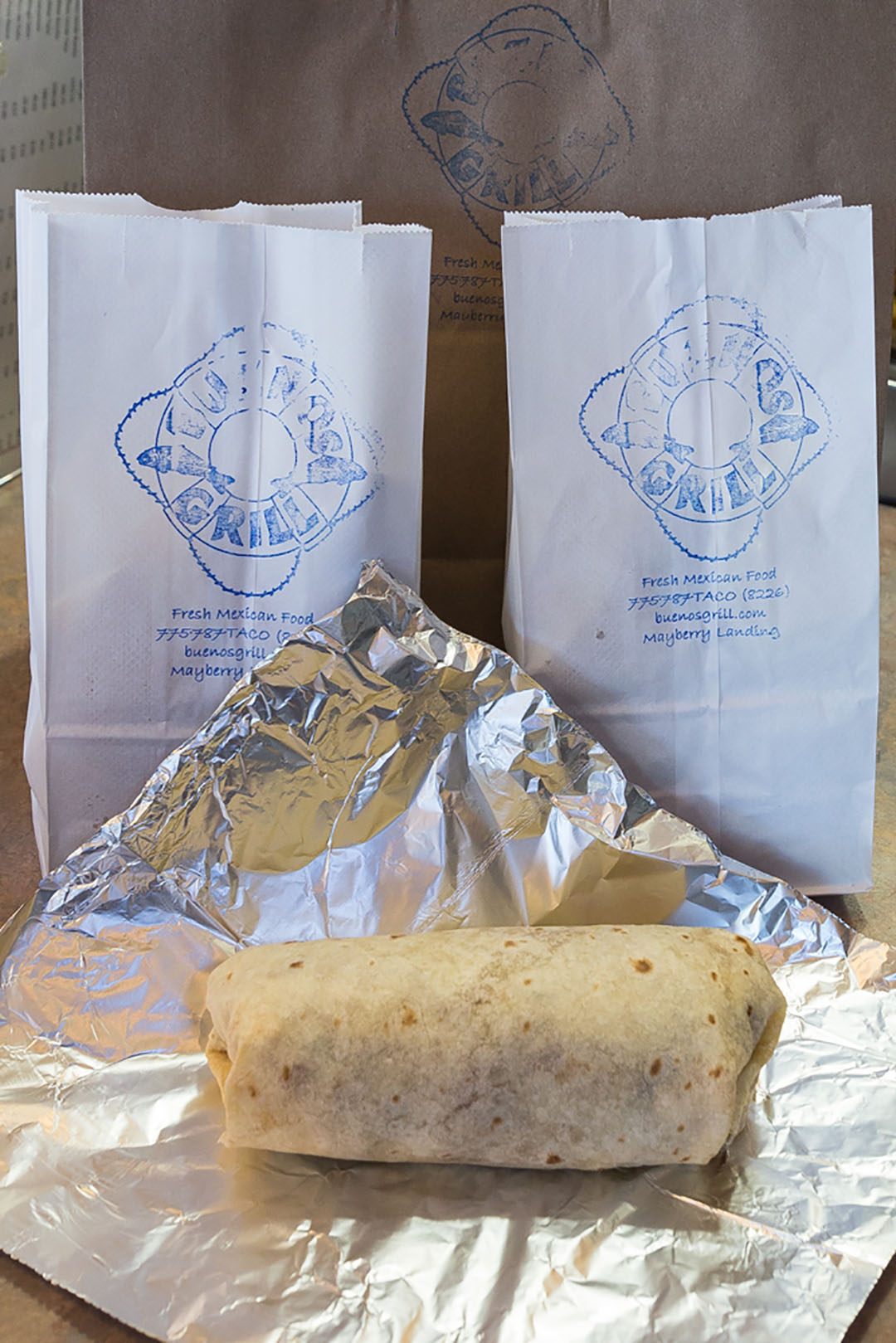
While Mimi has noticed a push at local restaurants to recycle, she still sees a big need for folks to be educated about waste reduction.
“I was at a restaurant the other day, and a couple ordered drinks in tiny bottles,” she recalls. “The bartender threw the bottles in the trash. I just cringed.”
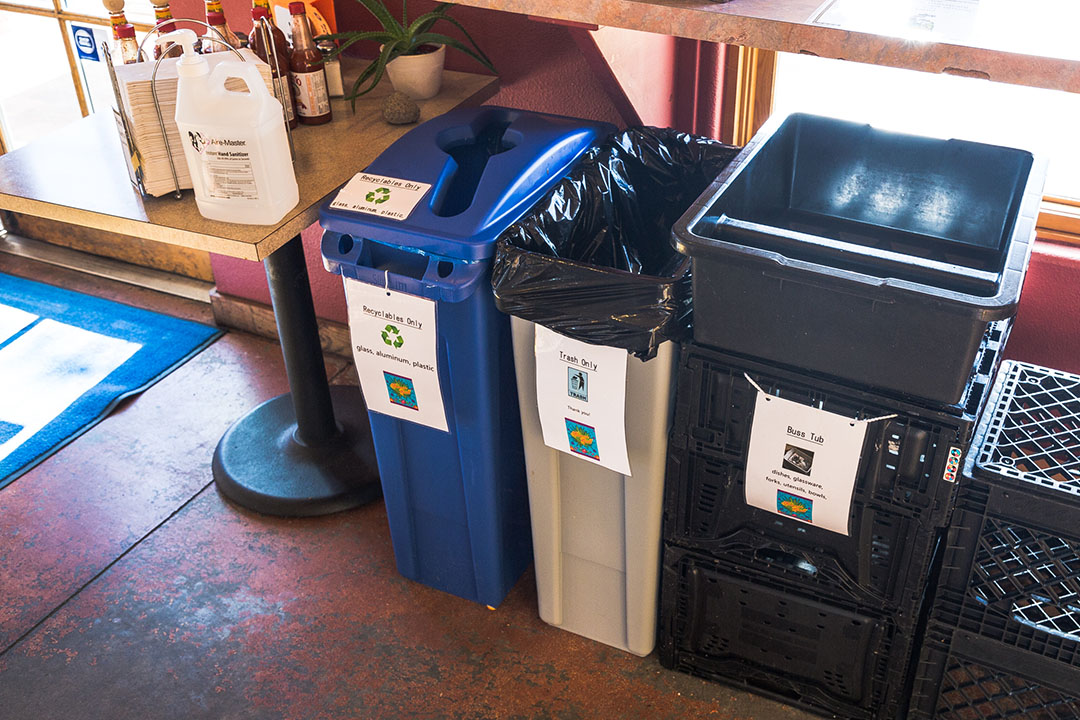
Even something as simple as a color-coded waste-bin system can make a big difference; encouraging employees to properly sort and dispose of items is key. Storage is another area of emphasis at Buenos Grill — all to-go foods are packaged in biodegradable, compostable containers.
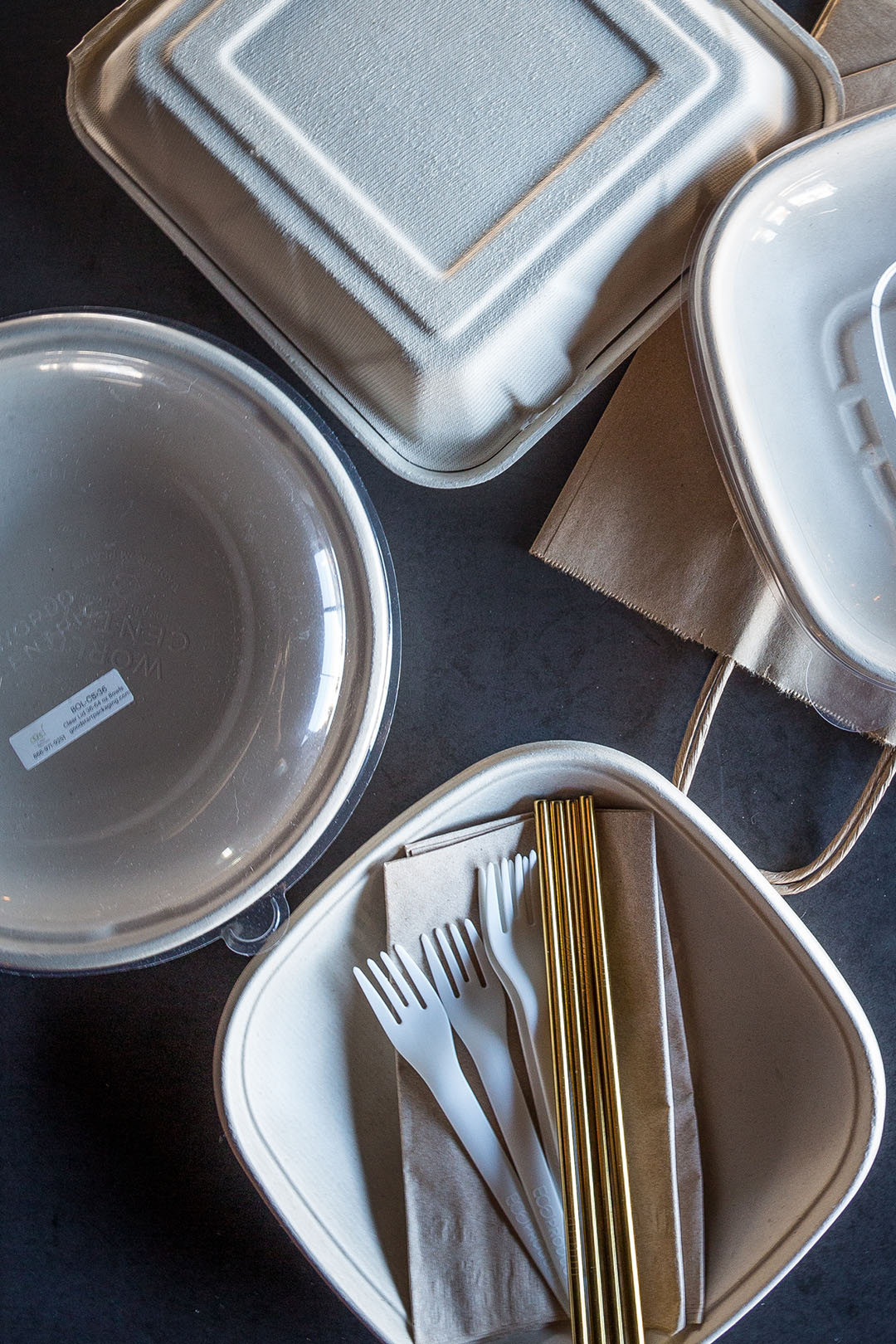
Mimi is certain if everyone in the restaurant can be prideful and take ownership in these practices, the community will take note.
“If we [restaurateurs] toot our own horns when we’re making the choice to be green, it’ll inspire others to believe in it,” Mimi adds. “We’re doing it not just for today, but for our children and the future of our planet.”
In addition to a robust recycling program and eco-friendly takeout containers, customers will find upcycled furniture and décor throughout the restaurant, such as the bottle-cap-covered chests in the bathrooms.

“We’ve become a disposable society in a lot of ways, even though things are made to last a very long time before being replaced,” Mimi says. “It’s so much nicer to use your furniture again. Chairs can be re-upholstered, and a carpenter can fix them for sturdiness.
“The chests were found at a little thrift store, and we used bottle caps to give them an old Mexico look. It’s a fun challenge to see how I can repurpose items rather than throwing them into the landfill.”
About the Soil
Getting into the habit of using a simple compost pile for food waste can help. Kirksey says Great Gold takes the idea of composting even further with a zero composting ideal, meaning he aims to use even the carrot peels and onion skins before tossing scraps into the bin.
“If there’s a way it can be made into something else, we take a moment to see if we can utilize it before it goes into compost,” he says.
Elements that do make it into the soil have a lasting impact, both from a single restaurant’s perspective and the farming industry’s. Kirksey and many others are focused on supporting healthy soil by working with the regenerative-agriculture-focused nonprofit Zero Foodprint, based in California. (To learn more about regenerative agriculture, see our story on page XX.)
“It raises funds through restaurant partners who generally put a surcharge on the menu that the guest pays,” Kirksey explains. “It’s usually 1 percent of the ticket. The restaurant will send a check to [the organization] and it will use the money to help support regenerative, carbon-neutral farming.”
Anthony Myint, co-founder and executive director of Zero Foodprint, explains that the organization was formed to change how food is grown to restore the climate.
“Changing how food is grown is not something any restaurant or consumer can do,” he says. “You can buy from a good farmer, but it becomes very challenging to work with them on changing their practices financially. This is something we’ve worked really hard to make possible.”
Zero Foodprint uses just a few cents from restaurant meals or other food purchases, in aggregate, to create grants that help farmers and ranchers forge acres and acres of healthy soil. This shift from conventional agricultural practices, which purely extracts from the soil, to a regenerative food system, which replenishes it, greatly sequesters the carbon dioxide humans emit each year.
Since January 2020, the organization has awarded more than $550,000 to 31 carbon farming projects, which are expected to remove 18,000 tons of CO2 from the atmosphere. This is equivalent to 2,000,000 gallons of gas.
Empowered Design
A restaurant’s kitchen and public areas can benefit from updates that improve efficiency, which save money in the long run. Jack Hawkins, principal architect at Reno-based Hawkins & Associates Inc., and Larisa Sexton, interior designer and architect license candidate with The Drafting Board in Reno, encourage restaurant and building owners to consider several updates, starting with energy-efficient appliances.
“We recommend induction cooktops for both residential and commercial kitchens,” Sexton says. “They use less energy, cool off faster, and heat up faster.”
She explains that new dishwashers are designed so that users don’t have to rinse dishes before placing them on the racks.
“They require far less water than washing by hand, and they are Energy Star rated,” she says.
Though it may require significant upfront costs and a likeminded landlord, another option to consider is the use of renewable energy.
“We get 315 days of sunshine each year,” Hawkins says of the region. “This is a really good area for solar photovoltaic technology, which converts sunlight into electricity, and hot water solar, which basically runs a fluid through a glass panel to provide hot water. A hot water solar panel usually pays for itself in four or five years.”
If renewables are out of reach, Hawkins suggests quick light bulb switches. Changing to LEDs and dimmers are an easy way to save energy costs.
Food on a plate. Waste in a landfill. Damaged soil. Old appliances. By starting small and making a few changes today, restaurant owners can help the environment and create a brighter future for generations to follow.
A self-described green foodie, Heidi Bethel supports all efforts to better the environment and is looking at a few light bulbs in her office that she intends to switch to LED as soon as she submits this story for review.
SIDEBAR
Take Out Wasteful To-Go Commodities
According to Sciencing.com, Styrofoam products are one of the biggest public health hazards, filling 30 percent of the world’s landfills. Styrofoam takes at least 500 years to decompose and leeches harmful chemicals and carcinogens into the environment during the process. Roughly 1,369 tons of Styrofoam get added to America’s landfills daily.
When Styrofoam is manufactured, the process releases large amounts of carbon monoxide into the atmosphere, causing respiratory and environmental issues. Styrofoam containers also release other harmful chemicals into food and drinks, especially when they are hot.
“We’ve never used Styrofoam because it was such a no-no in the ‘90s and takes forever to break down in landfills,” says Mimi Butler, co-owner of Buenos Grill in Reno. “[Buenos is] a fast-casual concept, and our to-go packaging has always been a compostable box or paper container.”
ReusableReno is a collective started by a group of friends — Lakshmi Albright, Linda Miller, and Zoe Bray — who live in Washoe County and are concerned about plastic waste. Through various studies, including a survey of area businesses and consumers, they’ve identified a focus on eliminating waste generated specifically by the takeaway food industry. Their #Skipthestuff campaign urges restaurants to stop providing single-use to-go accessories such as plastic cutlery, cups, lids, and condiment packets. They suggest only providing the items when customers request them.
Disposable plastic products also pose many problems because they cannot be recycled, so they end up in landfills. There, they disintegrate as microplastics, contaminating the earth and the water people drink.
“Did you know that it was recently confirmed that Lake Tahoe has a high amount of microplastics?” Albright asks. “Microplastics are already in our bodies, and this increasing amount is dire to our health and that of all life.”
While restaurant owners might consider alternative to-go containers and accessories made from biodegradable products such as sugarcane, corn, potato, and bamboo, #Skipthestuff encourages a complete mindset shift to reusables.
“Restaurants can initiate gentle nudges through social media, publicity, posters, and word of mouth — a gentle reminder to customers to bring their own bags, cutlery, and reusable containers,” Albright explains. “They can establish a system of reusable cutlery and containers on deposit. There is an increasing array of businesses that offer restaurants reusable foodware for rent, together with cleaning services.”
For details, visit Reusablereno.org.
